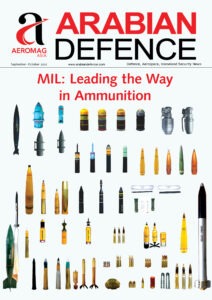
On October 16, Thales conducted the first flight tests of their innovative drone swarm technology, showcasing the potential for deploying drones with varying levels of autonomy. The use of artificial intelligence (AI) and intelligent agents significantly reduces the cognitive load on operators, ensuring they maintain control throughout critical mission phases.
This demonstration is a key advancement in Thales’s Drone Warfare strategy, where the company and its partners focus on interoperability and integration to enhance the coordination of drone swarms for diverse mission types. To address the armed forces’ requirements, Thales is proposing an innovative AI-based system architecture that grants drone swarms an unprecedented level of supervised autonomy, allowing them to adapt to changing operational needs.

While the operational value of drones on the battlefield is well established, their effectiveness has been constrained by two main factors: the need for one operator per drone and the requirement for a secure, resilient datalink throughout the mission. The recent flight tests conducted during the JDEC demonstrations highlighted Thales’s breakthroughs in overcoming these limitations to support tailored drone swarm operations. The COHESION demonstrator showcased how AI and intelligent agents enable a remarkable level of autonomous operation in drone swarm deployments.
The COHESION system architecture allows operators to adjust the level of autonomy for their drone swarms based on the mission phase, offering unprecedented flexibility in contested environments where electronic warfare can disrupt communication systems. This capability enables drones to operate independently without relying on a constant datalink with the control station. Drones can perceive and analyze their surroundings, share target information, assess enemy intent, and prioritize missions. They utilize collaborative tactics and optimize their trajectories, enhancing resilience and effectiveness while accelerating the OODA loop and improving battlefield transparency.
This innovative approach acts as a force multiplier without adding to the cognitive load on operators, who retain control over critical decisions. Thales’s commitment to trusted, cybersecure, human-in-the-loop AI ensures safe supervision, aligning with its principles of TrUE AI.
Hervé Dammann, Executive Vice President of Land and Air Systems at Thales, expressed pride in the development of these innovative solutions, stating, “We are proud to be developing innovative solutions aligned with strong ethical values. Our solutions are demonstrable, applicable, incremental and deployable, acting as a force multiplier without increasing the cognitive burden on operators, yet guaranteeing that they retain their central role in the decision-making process.”
As a systems provider and integrator, Thales aims to accelerate interoperability among various land, air, and naval platforms. The company plays a significant role in an ecosystem of French industries and tech firms dedicated to expanding the capabilities of frontline drones in operational theaters.
In June 2023, Thales introduced OpenDRobotics, an AI-based solution that integrates robotics technologies and unmanned air and ground assets to create comprehensive human-in-the-loop mission systems. Additionally, Thales has established itself as a manufacturer of unmanned air systems, with the Spy’Ranger 330 system selected for the French Army’s SMDR program. The company’s acquisition of Aeromapper in 2024 further broadened its drone product range to include the TOUTATIS loitering munition.
In March 2024, Thales launched cortAIx to accelerate the development of trusted AI for critical systems, with a focus on integrating AI tools to enhance data analysis from sensors while addressing the unique cybersecurity and operational requirements of systems in constrained environments.











